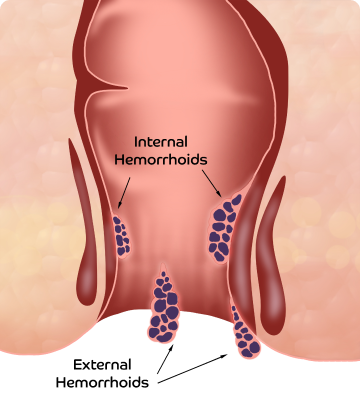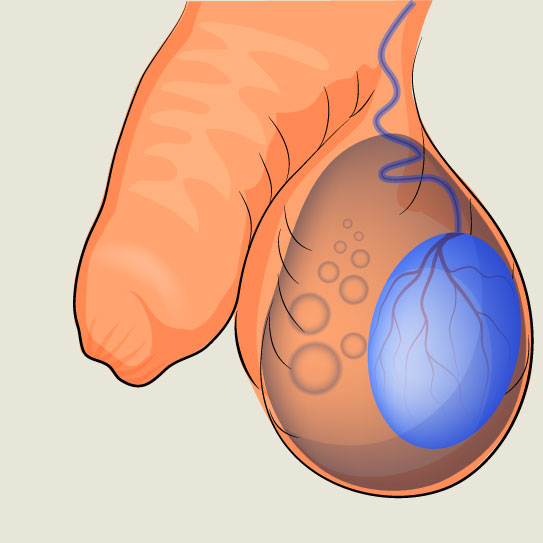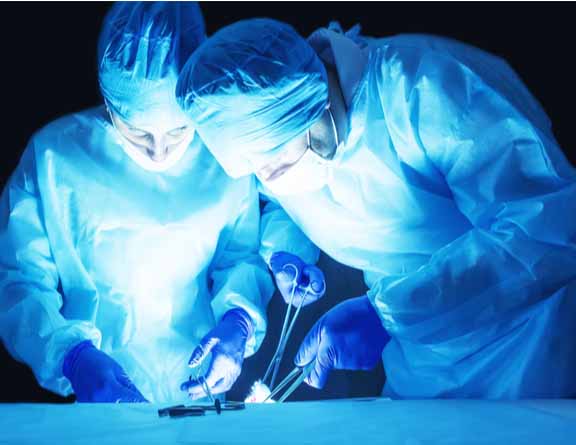What Can You Expect In Hydrocelectomy Surgery?
At Pristyn Care, an in-house team of highly experienced surgeons perform advanced hydrocelectomy to treat hydrocele conditions. Hydrocelectmy is an outpatient procedure that usually lasts 30-50 minutes. This procedure is performed under the influence of anesthesia. At Pristyn Care, hydrocelectomy is executed through a minimally invasive approach. The surgeon will make a tiny incision at the affected area to drain all the fluid accumulated in the scrotum. The hydrocele symptoms like discomfort in the groin due to the swelling, bulgy groin, or enlarged scrotum can cause hindrance in one’s daily activities. Hydroceletomy is a minor procedure to undergo for hydrocele conditions to get rid of fluid collected in the groin. After conducting a simple check-up once the anesthesia wears off, the doctor may discharge you on the same day of the surgery with guidelines to support recovery duration.
Advanced Hydrocelectomy For Hydrocele Treatment At Pristyn Care, Agra
Pristyn Care hospitals are well equipped with world-class medical technology to provide advanced treatment to patients suffering from hydrocele conditions in Agra. All the hospitals are well infrastructured, including vaccinated personnel. The staff is well trained in sanitizing the operation theatres and consultation rooms regularly after every appointment to avoid the transfer of the COVID-19 virus.`Patients with hydrocele conditions can visit the following Pristyn Care partnered hospitals to get a thorough diagnosis for the best suitable treatment:
- Anand Mangal Hospital
- SR Hospital
- Pushpanjali Hospital
- Wims Hospital
- Upadhayay Hospital
- SS Hospital
Choose Pristyn Care in Agra for the Best Hydrocele Treatment
Patients suffering from hydrocele can get in touch with Pristyn Care in Agra for best treatment. We offer additional services to make the patient’s journey smoother during the hydrocele treatment.
- Free cab services on the day of the surgery
- Uplifted safety measures to protect from COVID-19 virus
- Absolute confidentiality during the treatment
- 30% off on diagnostic tests,
- Free follow-up consultation post-surgery to support the healing process
Pristyn Care offers Minimally Painful solution to hydrocele
Pristyn Care provides minimally painful solution to hydrocele in Agra through surgery. The doctors at Pristyn Care hospitals in Agra use hydrocelectomy procedures that help patients in recovering quickly. Hydrocelectromy is the surgery, where the hydrocele is drained through the treatment. Hydrocelectomy is minimally invasive and the patients experience minimal pain. The patients are discharged within a few hours of the surgery from Pristyn Care clinics in Agra.
Book An Appointment with the Best Urologist In Agra
Pristyn Care in Agra has the best and highly developed medical equipment that helps doctors in completing the hydrocele surgery in a short time. You can make an appointment online with our urologists for your hydrocele treatment.
Our medical coordinators are just a call away from you to help you with everything related to your disease, diagnosis and the benefits of getting treatment at our hospitals in Agra. You can fill a form as well given on the page with required details and our medical coordinator will call you at the earliest.
Different Types of Hydrocele
Hydrocele is divided into the following types:
- Primary Hydrocele- In this type, the swelling is soft and nontender. It can grow very large in size as they are often asymptomatic. However, if left unattended, it may cause atrophy of the testis due to compression or obstruction of the blood supply.
- Secondary Hydrocele- The hydrocele that occurs due to a testicular disease is called secondary hydrocele. The cause can be cancer, hernia, orchitis, or any other kind of trauma. Secondary hydrocele is most commonly associated with acute or chronic epididymo-orchitis. It often goes away when the primary lesion is treated.
- Infantile hydrocele- This type of hydrocele has the tunica and processus vaginalis distended to the inguinal ring, but there is no direct connection of the hydrocele with the peritoneal cavity. It can occur in infants as well as adults.
- Congenital Hydrocele- It is a type of hydrocele that connects with the general peritoneal cavity. Though the communication is very small, there is still a possibility that the fluid may drain into the peritoneal cavity.
- Encysted hydrocele- In this type of hydrocele, there is a smooth oval swelling very close to the spermatic cord. Due to the swelling, many patients mistake it for inguinal hernia. It is also called spermatic cord hydrocele and has no communication with the peritoneal cavity.
- Funicular hydrocele- In funicular hydrocele, the sac has a direct communication with the peritoneum connecting it with the internal inguinal ring. However, no connection exists between the sac and tunica vaginalis. It can grow very large in size due to straining.
During initial diagnosis, the doctor will identify which type of hydrocele you have and narrow down the complications associated with the procedure. Then the doctor will start the treatment right away.
What complications can arise if hydrocele is left untreated?
Severe cases of hydrocele can cause serious complications. Some of the potential complications are listed below:
- If the size of the hydrocele continues growing, it can lead to obstruction in the blood flow. And when the blood flow is not proper in the testicles, it will further give rise to testicular atrophy causing degeneration of the testicular cells.
- Another complication that can arise if hydrocele is rupture. Due to the large volume of fluid accumulation in the scrotum, the hydrocele may rupture due to minimal spontaneous trauma.
- The hydrocele may transform into a haematocele if there is bleeding in the sac. And if the haematocele is not drained, a clotted haematocele will form as a result.
- Calcification of the sac is also a potential complication of leaving hydrocele untreated.
- The hydrocele may become infected during aspiration which will increase the swelling and inflammation.
- Infected hydroceles can also cause pyocele, accumulation of pus in the scrotum.
Normally, these complications can be identified during diagnosis before the treatment method is selected. All these complications are observed for at least 24-48 hours before proceeding with the treatment.
Foods to Avoid with Hydrocele
Many people don’t know this, but the foods you eat on a regular basis can either improve the hydrocele symptoms or make them worse. Therefore, you should avoid the following foods to manage hydrocele symptoms:
- Processed Items- These foods contain excess salt and sugar and have fiber content.
- Preserved Foods- These foods are not good to eat because they have artificial preservatives and other chemicals.
- Junk Foods- It includes food items like pizza, burger, fries, etc. that are low in nutritional value. They can cause indigestion and hinder the bowel movements as well.
- Spicy and Heavy Foods- Minimize the spice intake as well if you have hydrocele. Excessive spices can upset the stomach and cause a lot of discomfort during bowel movements.
- Pickles and Caffeine- These food products are also not good for the body and should be strictly avoided.
All these food items have a direct impact on the digestion process and the individual has a hard time passing stools. This will put strain on the groin region and worsen the hydrocele symptoms.
Post Hydrocelectomy Care Plan
After you’ve had hydrocelectomy, the doctor will give you a detailed recovery plan to ensure that the wound heals quickly and you will be able to perform all activities without any difficulty.
The most common tips that are included in the post-surgery care plan are given below:
- Take complete bed rest immediately after the surgery for at least 1 day.
- Allow your body to heal at its own pace. Do not push yourself to perform an activity even if it hurts.
- Start taking small walks once you feel like you can.
- Make sure that you don’t indulge into strenuous exercises that can strain or put pressure on the stitches.
- Refrain yourself from lifting heavy weights for at least 2-4 weeks until you recover completely.
- Post-surgery, you can eat your normal diet but make sure to stay away from oily, greasy, spicy, and processed food items as they can cause constipation and also slow down the healing process.
- Incorporate fiber-rich foods in your diet and drink plenty of water to stay hydrated.
- Pay special attention to the hygiene of the scrotal region and keep it clean and dry. Wash the wound with warm water and mild soap, then pat it dry.
- In the first 2 days, the doctor will ask you to avoid bathing. So, do not take a shower until the doctor gives you permission.
- Do not take baths in hot tubs and avoid swimming as well until the wound heals completely.
- Wear scrotal support or jockstrap for at least 1-2 weeks after hydrocele surgery. It will minimize the pressure in the scrotal region and allow you to perform regular activities without pain or discomfort.
- Avoid wearing tight clothes around the waist and groin area as they can irritate the scrotal region.
- Refrain from sexual activities as well until the doctor says it’s fine.
When you follow the doctor’s instructions properly, it becomes a lot easier to resume the daily activities and get back to the regular life after hydrocelectomy.
Prevention of Hydrocele
There is no assured way to prevent hydrocele in a baby. However, in adults, hydrocele usually occurs due to some infection, inflammation, or injury that can be avoided. Here are some preventative tips that will help:
- Proper prenatal care
- Try to avoid being injured, follow the safety & protection rules like wearing athletic cups or support while playing sports.
- Practice safe sex to reduce the chances of contracting sexually transmitted infections (STIs).
- Avoid pressure activities like horse riding that can put pressure on the scrotum.
- Treat cough properly as recurrent and chronic cough creates intra abdominal pressure and puts strain on the scrotum.
- Address constipation as soon as possible.
- Appropriate care should be taken to prevent hernia and if you already have it, get proper treatment to reduce the chances of hydrocele development.
In rare cases, hydrocele may also develop due to hereditary issues, such as a side effect of Ehlers-Danlos Syndrome. Therefore, it is also important that you keep a watch on your health and take the necessary measures to prevent hydrocele.










.svg)









